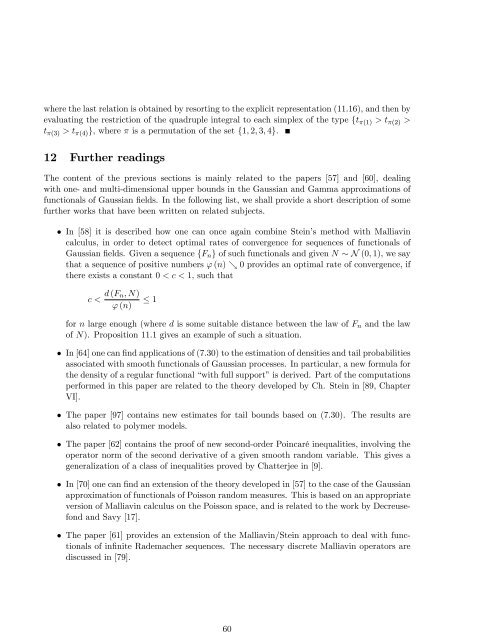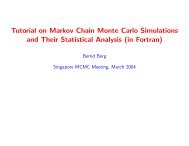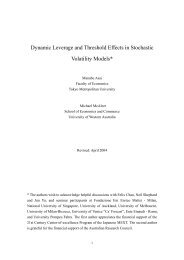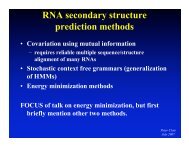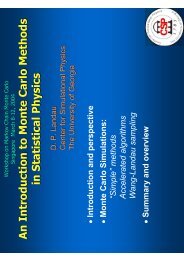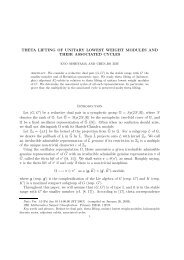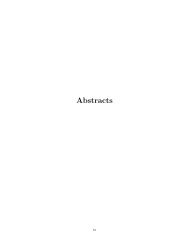Stein's method, Malliavin calculus and infinite-dimensional Gaussian
Stein's method, Malliavin calculus and infinite-dimensional Gaussian
Stein's method, Malliavin calculus and infinite-dimensional Gaussian
Create successful ePaper yourself
Turn your PDF publications into a flip-book with our unique Google optimized e-Paper software.
where the last relation is obtained by resorting to the explicit representation (11.16), <strong>and</strong> then by<br />
evaluating the restriction of the quadruple integral to each simplex of the type ft (1) > t (2) ><br />
t (3) > t (4) g, where is a permutation of the set f1; 2; 3; 4g.<br />
12 Further readings<br />
The content of the previous sections is mainly related to the papers [57] <strong>and</strong> [60], dealing<br />
with one- <strong>and</strong> multi-<strong>dimensional</strong> upper bounds in the <strong>Gaussian</strong> <strong>and</strong> Gamma approximations of<br />
functionals of <strong>Gaussian</strong> …elds. In the following list, we shall provide a short description of some<br />
further works that have been written on related subjects.<br />
In [58] it is described how one can once again combine Stein’s <strong>method</strong> with <strong>Malliavin</strong><br />
<strong>calculus</strong>, in order to detect optimal rates of convergence for sequences of functionals of<br />
<strong>Gaussian</strong> …elds. Given a sequence fF n g of such functionals <strong>and</strong> given N N (0; 1), we say<br />
that a sequence of positive numbers ' (n) & 0 provides an optimal rate of convergence, if<br />
there exists a constant 0 < c < 1, such that<br />
c < d (F n; N)<br />
' (n)<br />
1<br />
for n large enough (where d is some suitable distance between the law of F n <strong>and</strong> the law<br />
of N). Proposition 11.1 gives an example of such a situation.<br />
In [64] one can …nd applications of (7.30) to the estimation of densities <strong>and</strong> tail probabilities<br />
associated with smooth functionals of <strong>Gaussian</strong> processes. In particular, a new formula for<br />
the density of a regular functional “with full support”is derived. Part of the computations<br />
performed in this paper are related to the theory developed by Ch. Stein in [89, Chapter<br />
VI].<br />
The paper [97] contains new estimates for tail bounds based on (7.30). The results are<br />
also related to polymer models.<br />
The paper [62] contains the proof of new second-order Poincaré inequalities, involving the<br />
operator norm of the second derivative of a given smooth r<strong>and</strong>om variable. This gives a<br />
generalization of a class of inequalities proved by Chatterjee in [9].<br />
In [70] one can …nd an extension of the theory developed in [57] to the case of the <strong>Gaussian</strong><br />
approximation of functionals of Poisson r<strong>and</strong>om measures. This is based on an appropriate<br />
version of <strong>Malliavin</strong> <strong>calculus</strong> on the Poisson space, <strong>and</strong> is related to the work by Decreusefond<br />
<strong>and</strong> Savy [17].<br />
The paper [61] provides an extension of the <strong>Malliavin</strong>/Stein approach to deal with functionals<br />
of in…nite Rademacher sequences. The necessary discrete <strong>Malliavin</strong> operators are<br />
discussed in [79].<br />
60


